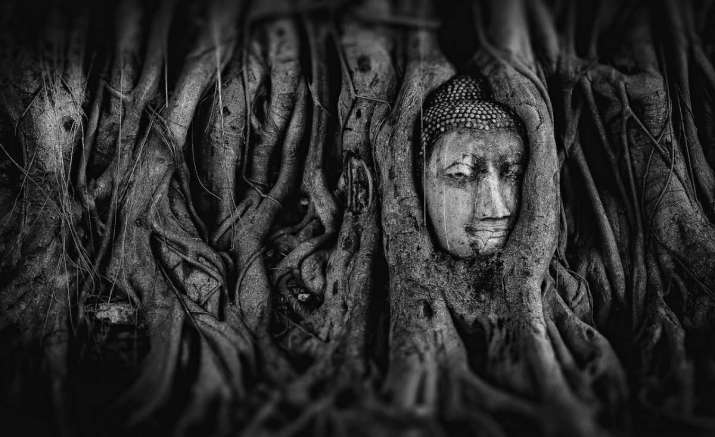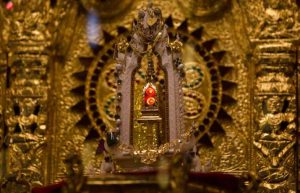
The Tathāgata Buddha explained to Sāriputta (Majjhima Nikaya 12, Samyutta Nikaya 12) what monks and devotees striving on the path ought to know about the mental powers of a Tathāgata, as follows:
The Buddha has 10 Tathāgata powers. The Tathāgata fearlessly declares his greatness based on those powers. As with the roar of a lion, the Tathāgata, drawing on those powers of the Dhamma, boldly and confidently preaches before any number of persons and devas. The transcendent dhammachakka* is turned by the Tathāgata Buddha using those powers.
What are these 10 powers?
1. The Tathāgata has the mental power to know and understand reality as it actually is, understanding why and how the possible is possible, and why and how the impossible is impossible (sthānāsthāna-jñānabala). The Tathāgata understands the exact underlying conditions and causes determining why things will happen and why things will not happen in the future.
2. The Tathāgata understands, as they actually are, the cause-and-effect relations of actions undertaken in the past, present, and future, with their possibilities and causes. This is the knowledge of the retribution of actions (karmavipāka-jñānabala). The Buddha has clearly realized the results of any kamma belonging to the past, present, and future, knows its reasons, and knows the place where it gives its results.
3. The Tathāgata understands, as they actually are, the ways leading to all destinations.This is the knowledge of the dhyānas.The Tathāgata has realized that the way the birth of any person takes place, based on the conditions and factors leading to that birth. The Buddha understands the conditions of the paths leading to birth in the heavenly worlds, birth in the human world, and birth in the lower worlds.
4. The Tathāgata understands, as it actually is, the world with its many different elements. This is the knowledge of the degree of the moral faculties (indriya-parāpara-jñānabala). The Tathāgata understands how worldly beings match up and attach to one another, how the ignoble are attracted to and mix with the ignoble, and how the ungrateful are attracted to and mix with the ungrateful, how the bad are attracted to and mix with the bad, the good with the good, how like is attracted to like in a cause-and-effect manner.
5. The Tathāgata understands, as it actually is, how beings have different inclinations. This is the knowledge of acquired dispositions (dhātu-jñānabala). The Buddha realizes and understands how, within the diversity of beings, their various types of behaviors, desires, and emotions interact and mix together.
6. The Tathāgata realizes exactly how a person’s abilities develop and how they deteriorate. The Buddha understands, as it actually is, the disposition of the faculties of other persons. He has knowledge of the way leading to their various destinies and their potential to realize or not realize the Dhamma accordingly.
7.The Tathāgata understands, as it actually is, the defilement, the cleansing, and development regarding the jhanas, liberations, concentrations, and attainments. This is the knowledge of former abodes (pūrvanivāsa-jñānabala). In other words, the Buddha realizes and understands the causes of the deficiencies or of the progress in regard to jhana, vimokkha, samadhi, samapatthi. He knows how one gains as a result of meditation and the exact way to develop the factors.
8. The Tathāgata recollects his manifold past lives, that is, one birth, two births, three births, four births, five births, 10 births, 20 births, 30 births, 40 births, 50 births, 100 births, 1,000 births, 100,000 births, many aeons of world-contraction, many aeons of world-expansion, many aeons of world-contraction and -expansion: “There I was so named, of such a clan, with such an appearance, such was my nutriment, such my experience of pleasure and pain, such my life-term; and passing away from there, I reappeared elsewhere; and there too I was so named, of such a clan, with such an appearance, such was my nutriment, such my experience of pleasure and pain, such my life-term; and passing away from there, I reappeared here.” Thus with their aspects and particulars he recollects his manifold past lives. This is the knowledge of death and rebirth (cyutyupapāda-jñānabala). The Buddha has realized, as they really were, how his past lives were spent; not only one or two lives but a recollection of an infinite number of past lives.
9. “Again, with the divine eye, which is purified and surpasses the conventional human eye, the Tathāgata sees beings passing away and reappearing, as inferior and superior, fair and ugly, fortunate and unfortunate, and he understands how beings pass on according to their actions.” This is the knowledge of death and rebirth (cyutyupapāda-jñānabala). The Buddha has exactly realized the way that beings pass away and reappear according to their kamma, and he has realized how those who collect demerits go to lower worlds, and how those who collect merits go to heavenly worlds.
10. Again, by realizing it for himself, with direct knowledge, the Tathāgata, in the here and now, how one enters upon and abides in deliverance of mind and deliverance by wisdom, which are taintless, through the destruction of the taints. This is the knowledge of death and rebirth (cyutyupapāda-jñānabala). The Buddha has realized and understood through his efforts and through his great wisdom, how one may eradicate all the defilements and thereby attain arahantship.
The manner in which the Tathāgata was able to fearlessly declare the workings of these supreme 10 powers to Sāriputta, to devas, humans, maras, and Brahmas, was and is a great blessing for those monks and devotees who were capable of comprehending the words of the Buddha, and even those of us in the present day who strive to continue on the path, who may be blessed to experience sublime states of both wonderment and gratitude.
If the Tathāgata Buddha had not explained to Sāriputta about these 10 qualities of mind, as recorded later in the texts, we would not have been afforded this kind of insight into the supreme powers that the Tathāgata developed and exercised in his lifetime and generously shared for the welfare of many.
* Dhammachakka (Pali, Wheel of Dharma; Skt: Dharmachakra)
See more
10 powers of a Tathagata (Dhamma Wiki)
Maha Prajnaparamita Sastra: Chapter XXXIX – The Ten Powers of the Buddha according to the Abhidharma (Wisdom Library)
The Buddha with Ten Extraordinary Powers (Mahamevnawa)
Ten Powers (Nichiren Library)












